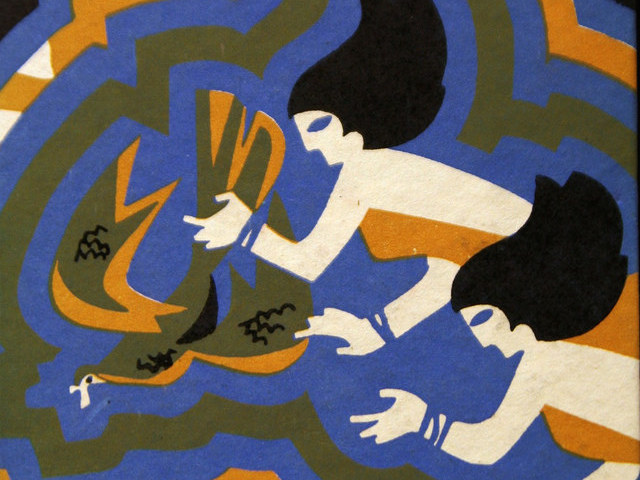The acclaimed Thai filmmaker sits down with novelist Katie Kitamura for a conversation about narrative vs. storytelling, black magic, and migrant populations.

June 15, 2012
KK: Do you think there are more restrictions in a feature film for you? Are you freer in the art context?
AW: Both. Sometimes the art can be restrictive because of the attention span built into the set up. If you want certain aspects, like the best sound system in the theater space, this kind of thing, that starts a dialogue—hey, if you want to make this piece, with the good sound, with the darkness, and the total attention of the audience, you’d end up creating a cinema in the gallery, so then—why not make a movie? So this kind of interesting dialogue comes out. So I think by practicing both, it really helps me see, to be free. You actually have different arenas to play.
KK: You’re represented by kurimanzutto. How is it for you being a gallery artist?
AW: I think it’s similar in the way of making film, that you have developed a relationship. Especially the kind of film I make, with the producer, we have a dialogue, and for kurimanzutto too, they just don’t say, ‘Hey, do you have a piece for us’? They just say we want to be involved form the pre production process.
KK: Are they involved with the feature films as well as the installation pieces?
AW: No. Not yet. Because it’s quite a different form of distribution. But I also joke with them, we can make a 35mm film for theater, but only two prints, or something like that. It’s involved, because my film producer people also talk with kurimanzutto people, all our activities are together.

KK: The Whitney Biennial is currently showing—
AW: Oh I have to go—
KK: Werner Herzog has an installation, and they are also showing Frederick Wiseman’s Boxing Gym, which played in the cinema and is available on DVD, but is now being shown in the biennial context. In a way it makes sense, as there are fewer and fewer cinema spaces, that films would be shown in the gallery more and more.
AW: Maybe it’s about the content too, or else the act of showing films, to stimulate this conversation.
KK: In the way that including photography in these shows some years ago, felt radical. It might feel radical to include feature films in the biennial context.
AW: But if it only belongs to that museum context, that would be sad.
KK: Especially when you’re talking about making films that are about Thailand’s political situation. Film’s a popular medium, and that is a good thing.
AW: Yes. It’s for the mass.
KK: You studied architecture. How has it changed the way you think about constructing spaces on a screen?
AW: At first it was very influential. I tended to think of movies as blocks, structures—rooms. Now it’s become less so, as I’ve become more relaxed about rules, movie rules about structures over time. It becomes less and less—it’s like a history of past lives.
KK: What are you working on next?
AW: I’m working on three things here: I’m finishing a movie for Arte Television, it’s called Mekong Hotel. It’s sixty minutes, so in between a short and a feature. It’s a portrait of a hotel near the Mekong. I went with my crew members and my cast, and we rehearsed a fictional film together, about a vampire woman. It’s a mix of architecture, actually, and fiction, and memory. A lot of memories, because the actress is from that area. Then I’m making a film for the Walker Art Center, this will be a political one. I’m working with the wives of two political prisoners in Thailand. I let them play badminton, but at the same time, we record really every detail, until they can’t go on with this fight. And then I’m making something very different, which is a movie for Lomo company, this trendy camera. They’ve started to make a movie version. It’s called LomoKino. So I’m making a film for them.
KK: Are there any feature films that you are developing?
AW: I’m writing. I’ve been trying to make a movie with Tilda Swinton for a long time. And we just finished our film festival together, two weeks ago in Thailand—it’s in the south, it’s amazing to be showing experimental film in the south, by the ocean. So then we started to talk more. And then we were like, Hey, we need to really do it now. So I hope that it’s coming next year.
KK: Would you make a film not set in Thailand?
AW: No, I think it will be in Thailand.
KK: Globally speaking, whether among artists or filmmakers, who do you see as your colleagues?
AW: I see a lot of people who I admire. Like Tsai Ming Liang and Hou Hsiao Hsien. I especially admire Manoel de Oliveira, the Portuguese director who is more than a hundred years old. He’s made films from the silent era to now. And digital—I don’t know if he’s working in digital. But he represents a utopian way—this idea that you can make a movie forever, until you die.



